Archaeology
When we think about Archaeology, it is difficult not to remember the films featuring the iconic character played by Harrison Ford: Henry Jones Junior, or simply, Indiana Jones. Although he had other notable roles in cinema, it was as Indiana Jones that he won the public's heart, awakening a fascination with adventure and exploration.
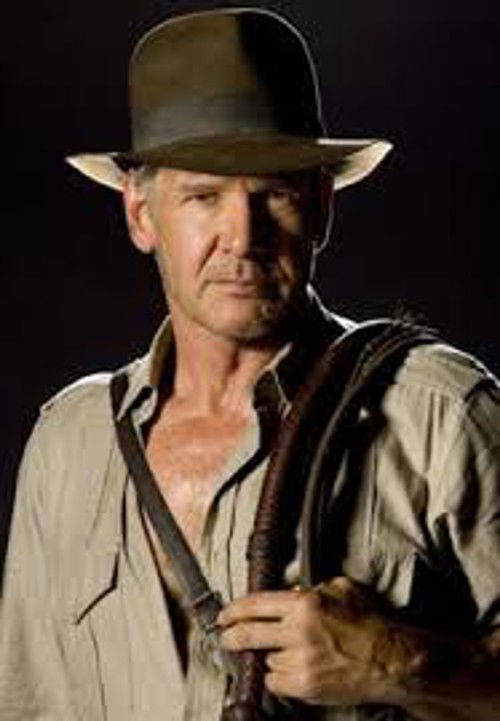
But, first and foremost, Archaeology is a science. Its objective is to study the cultures and ways of life of human societies, analyzing the material traces they left behind, whether movable (such as art objects) or unmovable (such as architectural structures).
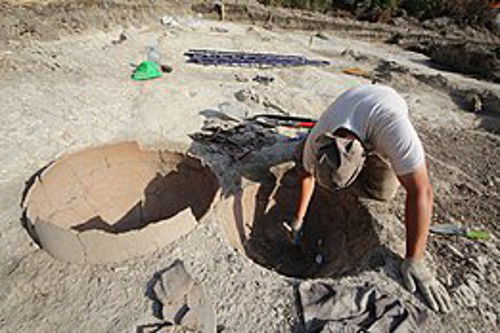
And it's on this adventurous theme, Indiana Jones-like, that we'll get to know Archaeology!
Game Info
Archaeology is a 2-to-4 players game, recommended age 10+, by designer Phil Walker-Harding, who, by the way, is also responsible for the game's art.
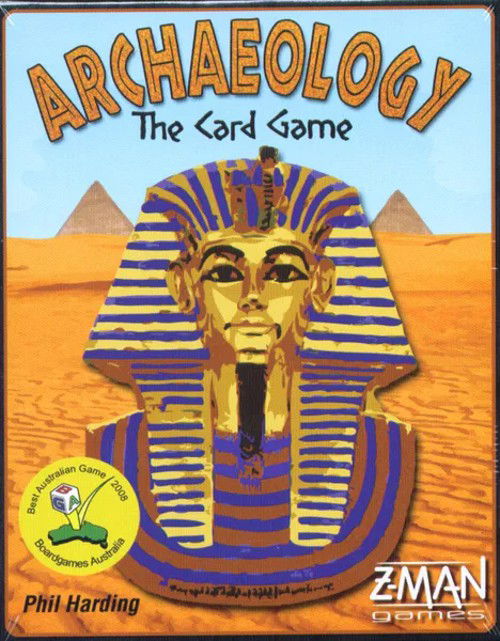
Initially released on 2007 in a limited run by Adventureland Games, it caught the attention of Z-MAN Games, who re-released it on a larger scale. Its main mechanic is collecting sets.
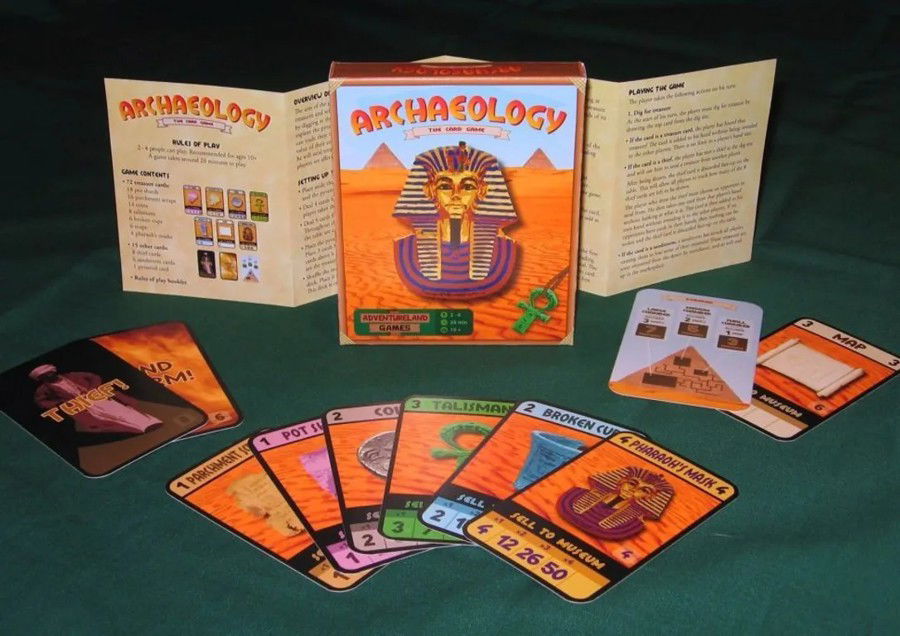
This is not the version ultimately released in Brazil - it was actually brought by Conclave, in 2018, which was already a reprint of the 2016 version, Archaeology: the new expedition, but it is a game with different rules and mechanics, which is not our focus here.
Out of curiosity, the designer, Phil Walker-Harding, has already developed more than 70 games, among which the following stand out: Gizmos, Bärenpark, Imhotep, Sushi Go!, Cacao, among others.
Let's get to the game!
The Game
We are in the Egyptian desert, and we are archaeologists working at dig sites looking for lost treasures to make a fortune.
We keep digging, on the look out for pieces, parchments, pots and other priceless artifacts. At the site, we are able to find maps to explore the great pyramid in hopes of discovering more treasures in the burial chambers. We will be able to do trades in the marketplace and sell it all to the museum at the right time in order to maximize profit.
Alas, it's not all roses: devastating sandstorms could throw our expedition into disarray, and crafty thieves could show up at our dig sites ready to steal the prized finds!
The setup is basically the pyramid with cards locked away in the burial chambers, 5 artifact cards randomly available at the marketplace, each player gets 4 artifact cards in their hand and, next to it, the deck of artifact cards for digging.
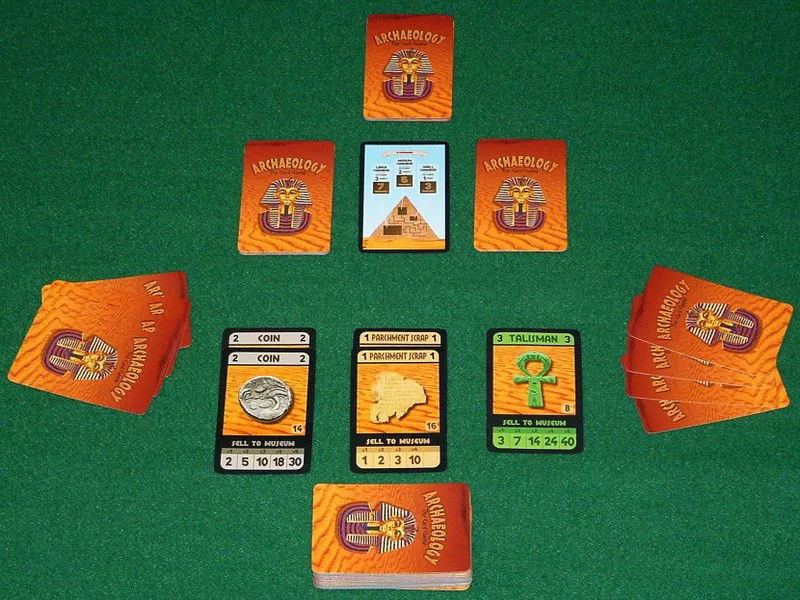
In other words, we started with 4 artifacts in our hand, which represent our archaeological site. Now it's time to pull up our sleeves, dig more, make trades at the marketplace, sell to the museum, but always be careful and watch out for the sandstorm and the thieves.
The Archaeology turn is very simple and consists of the following actions:
Many things can happen when Digging, which is nothing more than taking a card from the dig site deck, and you could end up with a treasure or a map card in your hand - which, by the way, has no card limit - but very troublesome cards can also appear, such as a thief or a sandstorm.
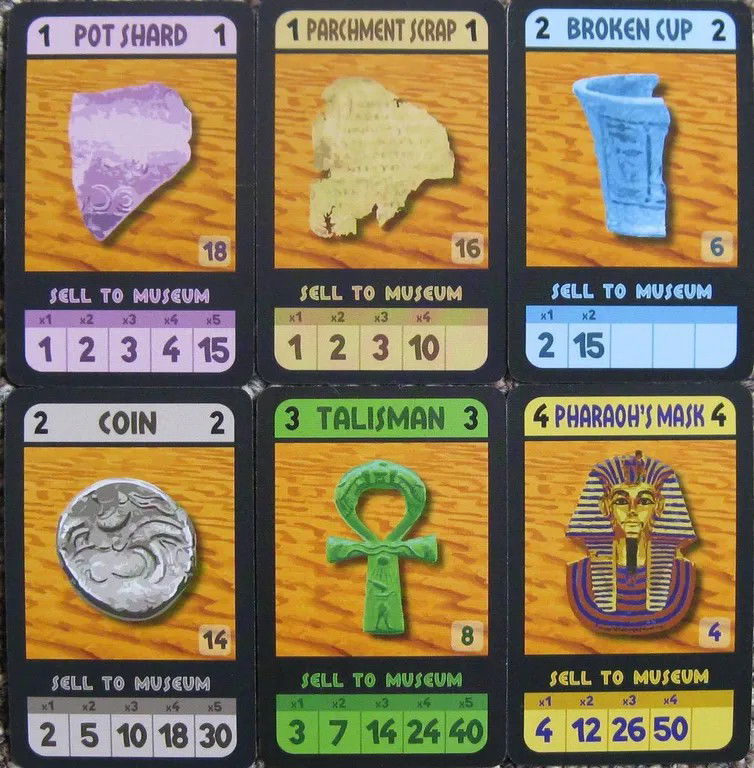
In the specific case of a thief card appearing at the dig site, the player who removed the card will use it to steal a random treasure card from another player's hand, but without looking at it.
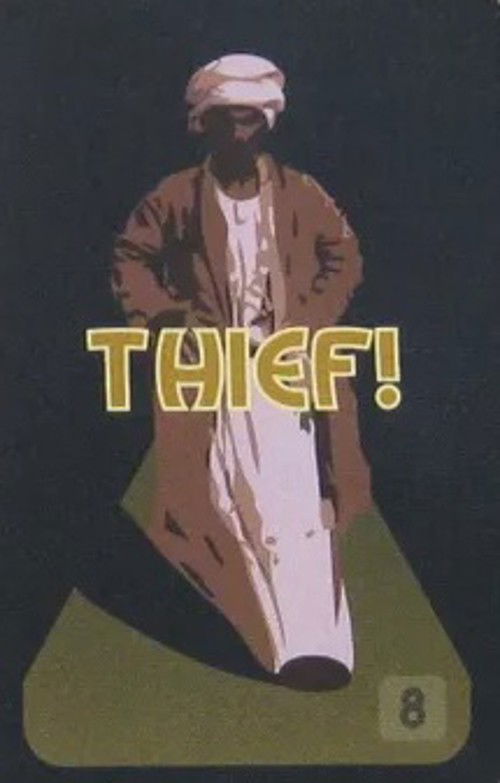
After that, the thief card is discarded. Obviously, if no opponent has any cards in their hands, nothing can be stolen and the thief's card is simply discarded.
If a sandstorm arrives, it hits all players, causing them to lose some of their treasures.
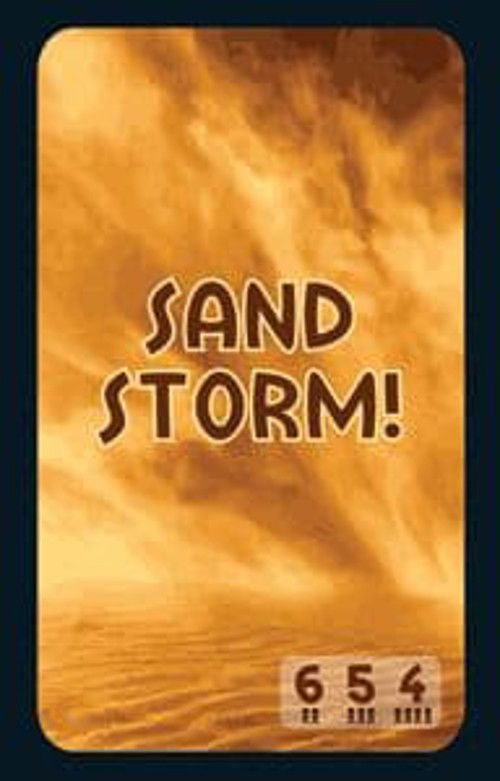
This is how it works: each player must discard half of their cards, rounded down, starting with the player who drew the sandstorm card, and proceed clockwise around the table. Players can choose which cards they'll discard.
The lost cards now belong to the marketplace and are therefore placed face up in the middle of the table. When all players finish discarding, the player who drew the sandstorm card restarts their turn, digging again for treasure.
The idea of the card is that, after the sandstorm has passed and swept half of our treasures that were in our excavation (our hand), these treasures are soon reclaimed from the desert by local merchants and will therefore end up on the marketplace.
The optional actions, all very useful, are crucial for the game to progress. Trades in the marketplace allow you to have rare artifacts in your hand that can be sold to the museum for a very good profit.
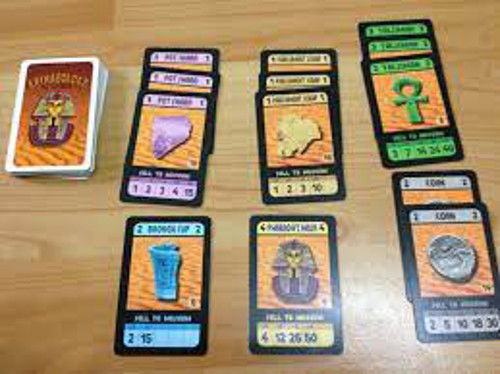
The trading is very simple and entirely based on the values of the cards, for example: if you have a card with a value of 2, you can exchange it for another one with a value of 2, or for two cards with a value of 1 each, and so on.
Exploring the pyramid in search of more treasures is another interesting optional action, and for this you'll need a map card. It can be used to access the burial chambers or simply be sold in the museum as an artifact.
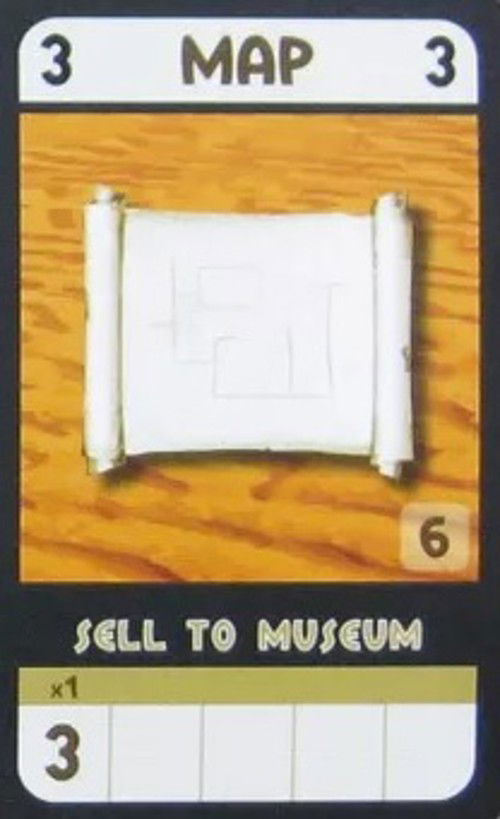
If you choose to access the burial chambers, depending on the number of map parts you have, you will be able to access increasingly larger chambers.
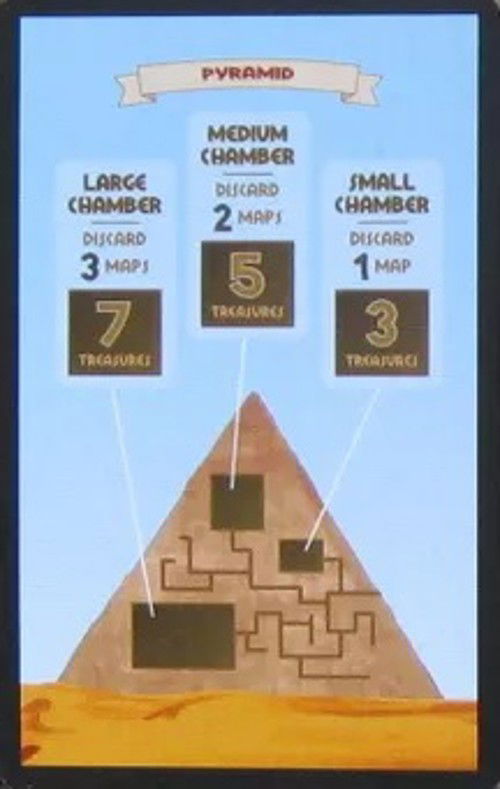
The pyramid has 3 chambers that can be explored:
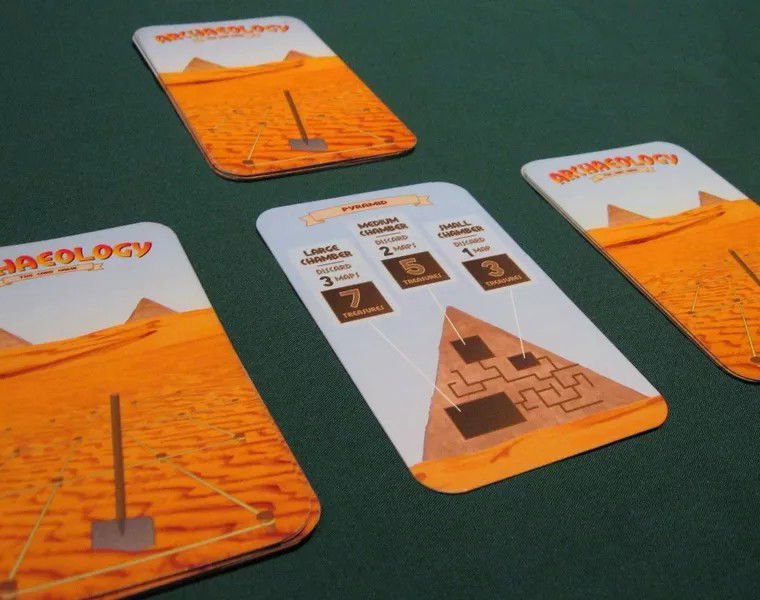
It's certainly worth it, as they can contain treasures that'll help you complete your collection.
Selling treasures to the museum, by the way, is extremely important. This is the only way to guarantee your score and avoid the turmoils of the thieves or the sandstorm - after all, in the museum, the artifacts will be safe.
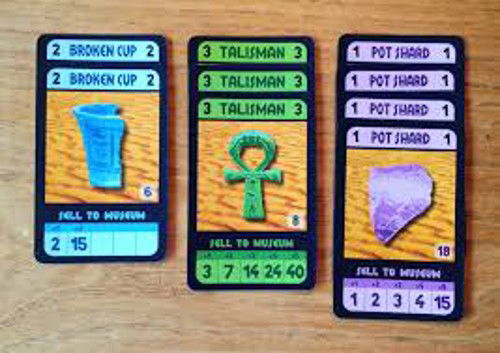
In practice the mechanic is quite simple, you have the artifact cards in your hand, which means they are in your dig site, unprotected, in danger of theft and sandstorms, but you hoard them in order to gather a minimum and satisfactory number to sell to the museum and thus guarantee your points. The goal, in the end, is to achieve the famous complete set.
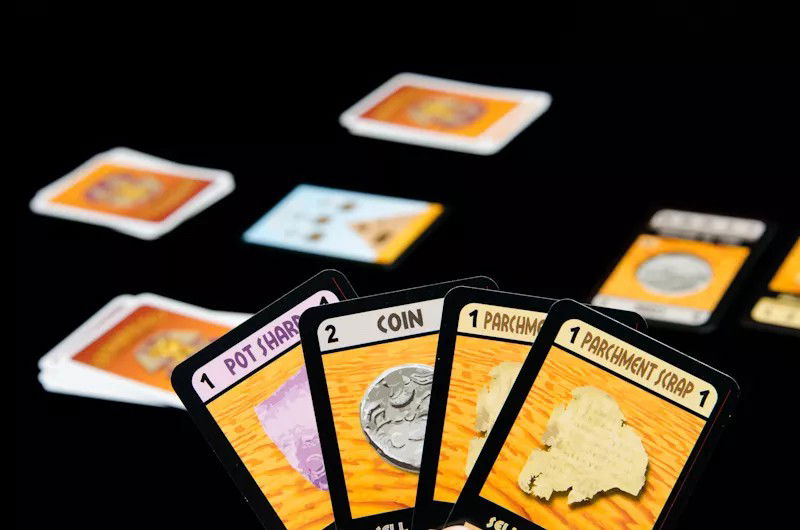
Of course, the more cards of a certain artifact you have in your hand, the more points you will earn when you sell to the museum. That is the "catch" of the game, if you keep many artifact cards in your hand before selling, you risk a thief or sandstorm taking them away. It's a dilemma!
Once that's done, it's the other player's turn!
Ending the Game
Once there are no more cards in the dig site deck, the game continues, but players do not dig for treasure at the start of their turn. From this point on, a player can choose to pass and take no action on their turn. If all players pass in sequence, the first player to pass must sell at least 1 of their cards to the museum when they get their turn back.
When all players run out of treasure cards in their hand, which means, all cards in their hands have been sold to the museum, the game ends.
Each player adds up the total value of what they sold to the museum during the game. The sales value of each set of treasures is calculated separately. These values are then added together and the player with the highest total wins.
In case of a tie, the tied players count the total number of treasure cards they sold to the museum. Whoever has the lowest total is the winner.
Strategy Tips
Despite the simplicity of the rules, Archaeology welcomes strategic plays. The artifact, map, thief, and sandstorm cards provide valuable information for this.
Each artifact card displays its market value and profit in the set collection, but also indicates how many copies there are in the game. This helps to estimate the availability of cards, even if you're not completely sure how many could be left.
Thief cards are six in total, and are removed after being used, so they can be accounted for by attentive players.
Sandstorms vary depending on the number of players:
- 2 players: 6 cards
- 3 players: 5 cards
- 4 players: 4 cards
They are also discarded after use and can be checked at any time.
Maps are essential to access the three burial chambers of the pyramid, with exactly six cards in the game. If a player sells them to the museum, some chambers may become inaccessible. As discarded maps can also be checked, this facilitates strategic planning.
Each sale of artifacts to the museum is final, with no possibility of adding more cards to the set later. Evaluate whether it is worth keeping cards in your hand or selling them immediately, considering the rarity and value of the artifacts.
The sandstorm can be used to your advantage, as it puts cards on the market, allowing for interesting acquisitions. Take advantage of this opportunity.
Observing your opponents is essential. Their trades in the market reveal what artifacts they are collecting. Use this information to plan your sales and choose who'll be targeted by the thief.
Manage your hand well, use the marketplace intelligently, sell at the right time and win in Archaeology!
Rules and Gameplay Videos
Rules:
Gameplay:
Pedagogical Tips
If you're looking for a quick game that's easy to explain and to learn, withouth language barriers, intuitive and offers a variety of educational stimuli, Archaeology is your game!
Pedagogically, the game brings several references to archeology with the artifact cards, and this can yield good stories, and even some research in books or on the internet to show your children how enchanting and important the work of archaeologists is. You can take advantage of this and talk about history and geography, in a very light and fun context.
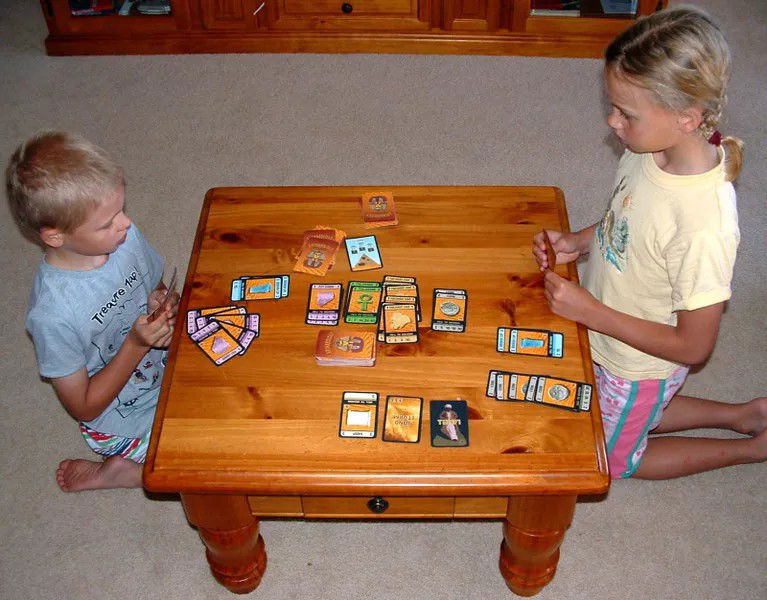
Mathematical-logical thinking will always be present when trading with the marketplace and selling to the museum, and also by managing your hand of artifact cards, knowing whether you already have the complete set collection for a good sale, and even preparing for what you will unfortunately lose in the event of a sandstorm.
In fact, the thief and sandstorm cards bring a cool surprise factor to the game, generating good expectations with each card drawn from the dig site deck. This will certainly create good moments to remember, given the famous “good vibes” that you get from this game.
Memory will also be greatly stimulated during the game, as you can encourage the child to memorize what the opponents have already taken so as not to put what they are looking for on the market, or even to use it to your advantage when the thief is in your hand, to know who is the better target to take a card from. Encourage the use of memory.
Management and strategy work together. Pedagogically, Archaeology provides several necessary and important stimuli for your child! Enjoy it!
I recommend Archaeology in your collection!










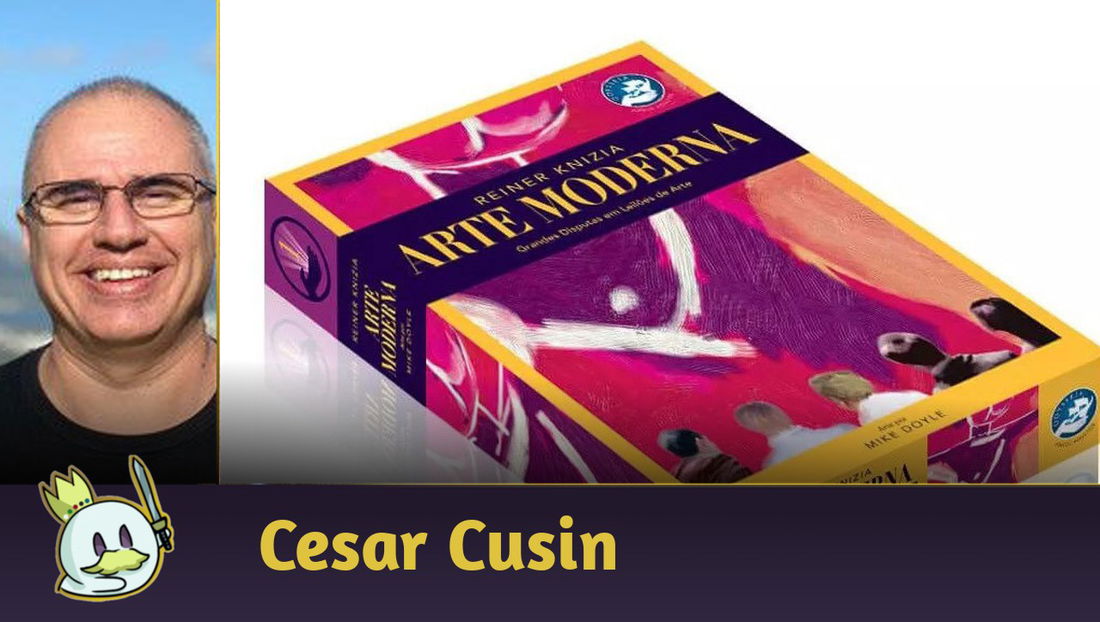


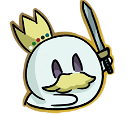
— Comentarios 0
, Reacciones 1
Se el primero en comentar